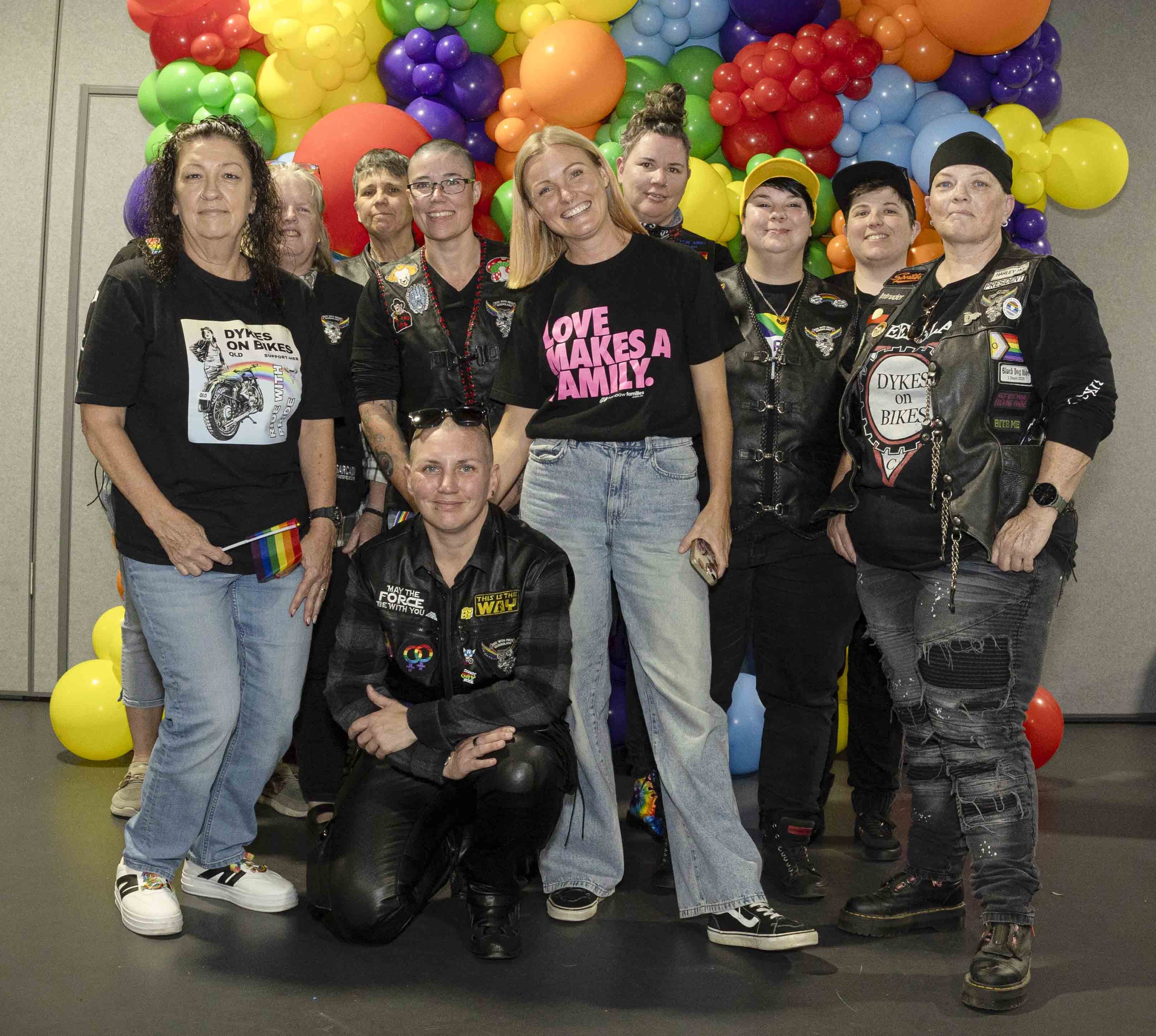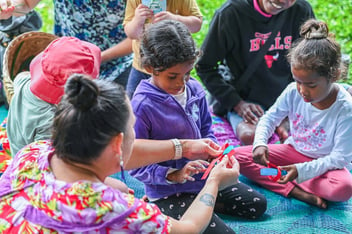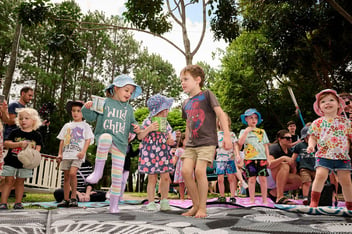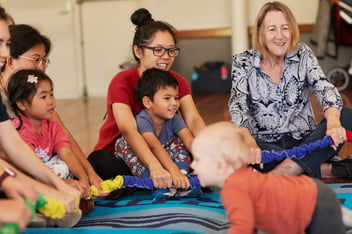
Exploring Culture Through Play, Building a Future of Inclusion and Belonging
Blog > Exploring Culture Through Play, Building a Future of Inclusion and Belonging

Exploring Culture Through Play, Building a Future of Inclusion and Belonging
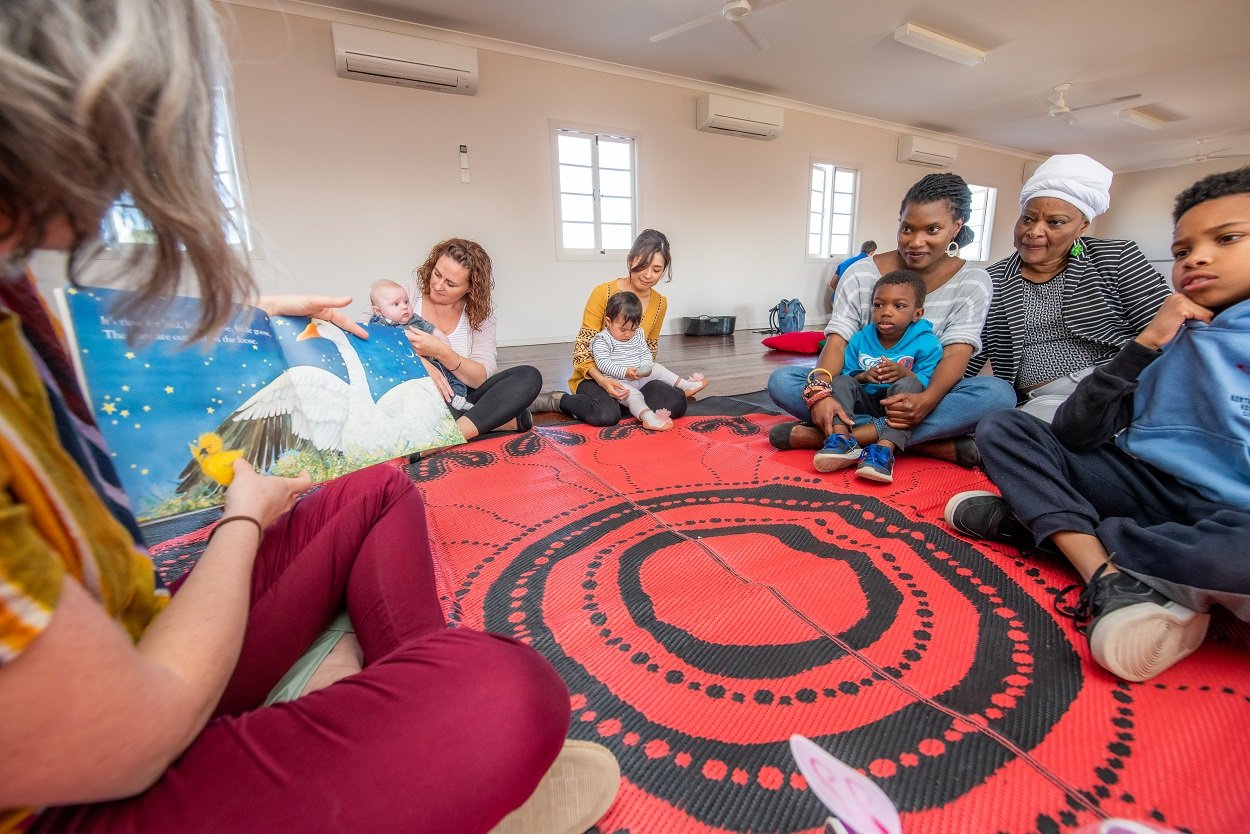
We know that play is a powerful tool for connection, learning, and identity-building. It’s where children begin to understand who they are, where they come from, and how they relate to others.
From the moment they’re born, children begin absorbing the world around them, its sounds, stories, customs, and colours. Through play, they reflect what they see and feel, weaving culture into their games, songs, role-playing, and creative expressions.
.png?width=900&height=600&name=PLAY%20MATTERS%20(2).png)
Children are naturally curious. When they’re given opportunities to explore different cultures through play, they begin to develop empathy, respect, and a broader worldview. These experiences help them:
- Feel culturally safe and seen, which is essential for emotional wellbeing and confidence
- Build social skills through diverse peer interactions
- Strengthen cognitive development by engaging with new ideas, languages, and traditions
- Celebrate their own identity while learning to value others
Research continues to affirm that culturally safe environments help children thrive and are an underpinning principle of the 10 Child Safe Standards currently coming into effect across Queensland, the universal principle ensuring cultural safety.
Cultural safety assists children thrive - emotionally, socially, and academically. When children feel respected and included, they’re more likely to engage, express themselves, and build meaningful relationships.

Learning about other cultures can also help children by:
- Promoting Cultural Awareness: Engaging in cultural play exposes children to various customs, traditions, and languages from different parts of the world. It helps them develop an understanding and respect for different cultures, promoting inclusivity and tolerance.
- Enhancing Social Skills: Cultural play often involves interacting with peers from diverse backgrounds. A study from The Australian Journal of Early Childhood suggests that children with diverse cultural exposure have better social skills, such as communication, cooperation, and empathy. Children learn to appreciate and value different perspectives, which is crucial in a globalised world.
- Developing Cognitive Skills: Through cultural play, children gain knowledge about different countries, their geography, history, and languages. This exposure enhances their cognitive abilities, such as critical thinking, problem-solving, and memory retention.
- Language Acquisition: Cultural play provides an opportunity for children to learn and practice different languages. Whether it's through language flashcards or interactive games, children can develop basic language skills and become more comfortable with diverse linguistic experiences.
- Expanding Creativity: Cultural play encourages children to explore and express their creativity. They can engage in art and music activities inspired by different cultures, allowing them to embrace diversity and develop their artistic skills.
- Building a Sense of Identity: By engaging in cultural play, children can establish a connection with their own cultural heritage. They learn about their family traditions, language, and history, which helps in building a positive sense of identity and self-esteem.
- Fostering Global Citizenship: Cultural play nurtures a sense of global citizenship in children. They learn to appreciate the interconnectedness of the world and the importance of respecting and valuing cultural differences. This mindset prepares them to be responsible global citizens in the future.
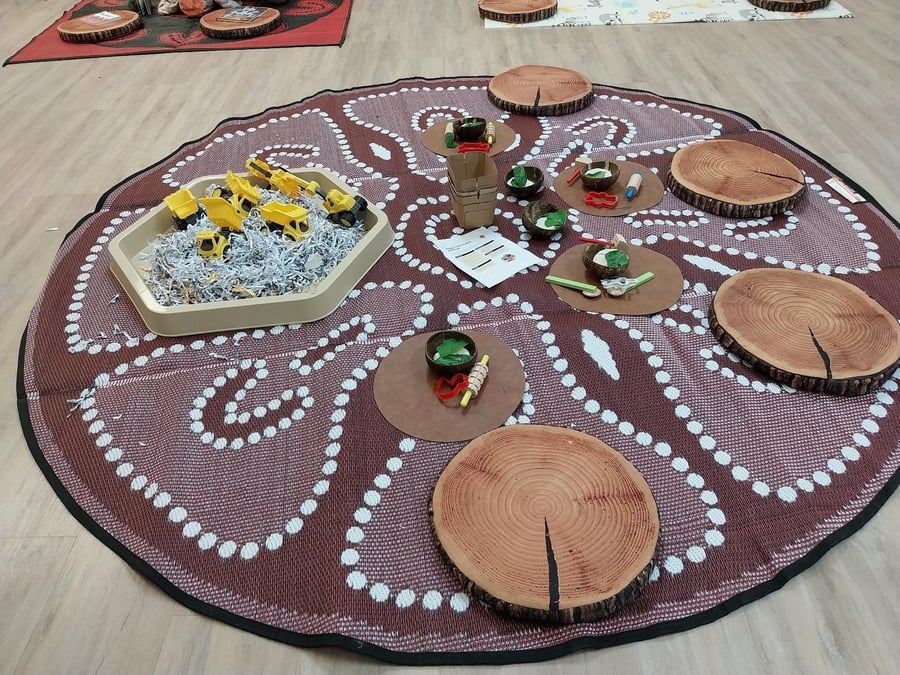
What does cultural play look like?
Cultural exploration can be as simple as learning songs and dances from different cultures, or playing musical instruments that children may not have seen before. Play Matters Sing&Grow have a great range of songs, including Inay for free on Spotify.
Other ways to include cultural play might include:
-
World map puzzles: Introducing children to puzzles using maps can help them learn about different continents and countries, and build their understanding of geography. Finding different countries can open up discussions on backgrounds, foods, weather, flags and national dress.
-
International cookbooks: Borrowing international cookbooks from the library can open up a culinary world tour for children. Cooking recipes from various countries allows them to explore different cuisines while learning about the cultural significance of certain ingredients or dishes.
-
Build a diverse doll collection: Role-playing with dolls from different backgrounds fosters global awareness and understanding. Children can create stories and scenarios that reflect the diversity of our world, promoting inclusivity and acceptance.
-
Embracing cultural celebrations: Learning about, and celebrating different cultures, such as NAIDOC week, Lunar New Year, Eid, Diwali and World Children’s Day. The Australian Government Department of Home Affairs has a great list of multicultural observations.
By incorporating these play ideas into everyday activities, parents and educators can help children see their own roles in a diverse society and start to build curiosity and respect for other cultures.
Fostering understanding of First Nations cultures
Fostering an understanding of First Nation’s cultures is embedded in the National Quality Framework, with an emphasis on building cultural competence. Cultural competence is the ability to ‘understand, communicate with and effectively interact with people across cultures.'
Embedding Indigenous cultures into play might look like watching shows on ABC Kids such as Little J and Big Cuz, listening to First Nations stories, lullabies and songs, or playing with culturally appropriate toys, such as the KIYA Indigenous doll.
Throughout the year, there are many opportunities to get children involved in celebrations and events to promote an understanding of First Nations cultures, such as Reconciliation Week, SNAICC, and Indigenous Literacy Day. Local councils will also have their own events and programs, such as bush playgroups and festivals that children and families can take part in to learn more about local languages, customs, stories and connections to the local environment.
Culturally rich play is education in action. It helps children build the foundations for global citizenship, where empathy, respect, and inclusion are second nature.
As parents, educators, and community members, we play a vital role in shaping a future where every child feels safe, valued, and celebrated. By embracing cultural diversity in play, we’re nurturing a generation that will grow up understanding the beauty of difference and the strength of unity.
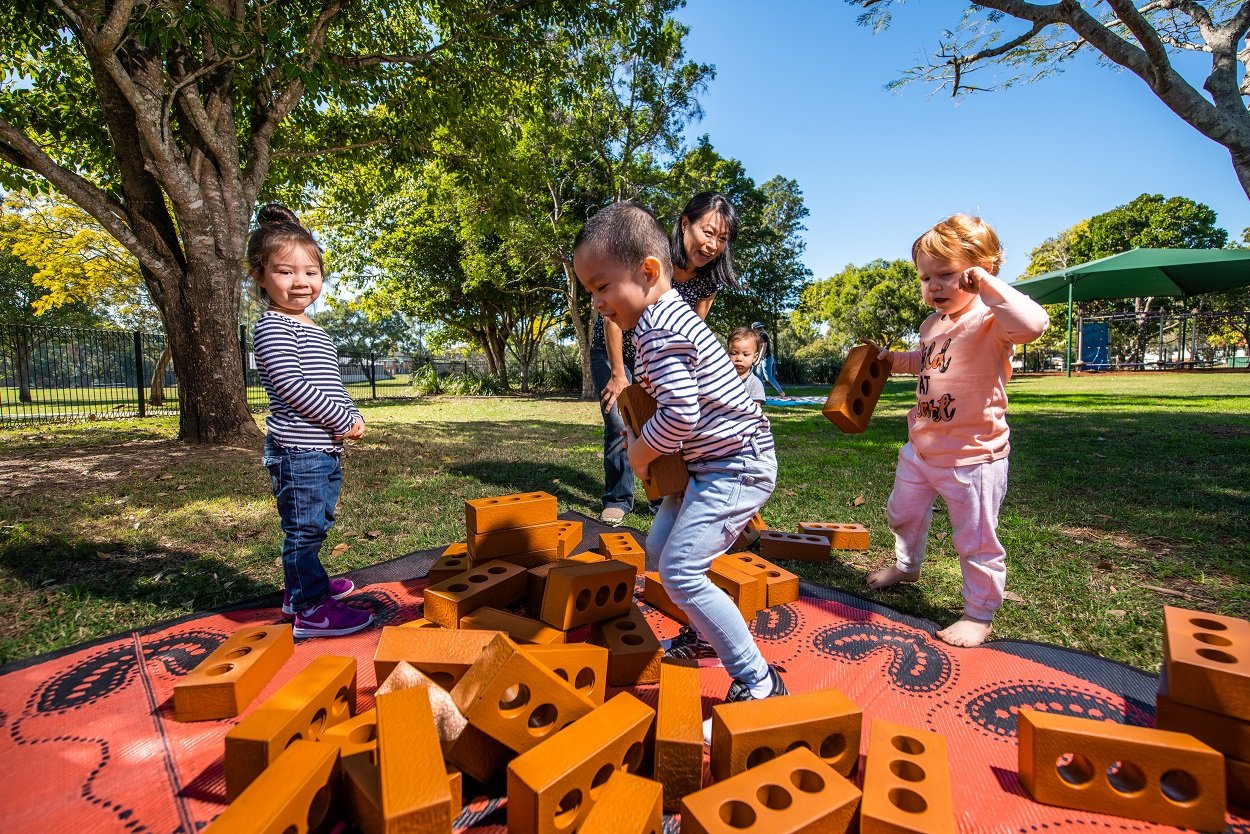
References:
ABC Kids listen. (n.d.). Little Yarns. [Audio podcast]. Spotify. https://open.spotify.com/playlist/4fMJvxdO0v2Z28ZjMXXxYS
Australian Institute of Aboriginal and Torres Strait Islander Studies. (n.d.). AIATSIS Map of Indigenous Australia. https://aiatsis.gov.au/explore/map-indigenous-australia
Australian Institute of Family Studies. (2000). Child care in cultural context: Issues for new research (Research Paper No. 22). Melbourne. https://aifs.gov.au/research/research-reports/child-care-cultural-context
Dorset Council Child Care Services. (n.d.). Why is it good for children to learn about other cultures? https://www.dorsetccc.com.au/why-is-it-good-for-children-to-learn-about-other-cultures/
Early Childhood Australia. (2019, August 1). Exploring Indigenous ways of knowing and being. The Spoke. https://thespoke.earlychildhoodaustralia.org.au/exploring-indigenous-ways-knowing/
Early Childhood Australia. (n.d.). Introducing culture and diversity in a monocultural classroom. The Spoke. https://thespoke.earlychildhoodaustralia.org.au/introducing-culture-and-diversity-in-a-monocultural-classroom/
Sing&Grow. (2014), Let's Sing&Grow [Album]. Spotify https://open.spotify.com/album/5H5hsA4rcbT4VbMMpX9IKa
National Association for the Education of Young Children. (2017, December). Supporting language: Culturally rich dramatic play. Teaching Young Children, 11(2), 14–15. https://www.naeyc.org/resources/pubs/tyc/dec2017/supporting-language-culturally-rich-dramatic-play
National Aboriginal and Torres Strait Islander Children’s Day. (n.d.) https://www.naidoc.org.au/
The Spoke – Early Childhood Australia’s Blog. (n.d.). Promoting cultural competence in early childhood. https://thespoke.earlychildhoodaustralia.org.au/promoting-cultural-competence-early-childhood/
The Spoke – Early Childhood Australia’s Blog. (n.d.). Supporting cultural diversity. Be You. https://beyou.edu.au/fact-sheets/relationships/supporting-cultural-diversity
Queensland Family and Child Commission (2025) The Universal Principle and Cultural Safety. https://www.qfcc.qld.gov.au/childsafe/standards/cultural-safety
Find a play experience near you:
Subscribe to our newsletter >
Related content:
Advertisement:
.jpg)
